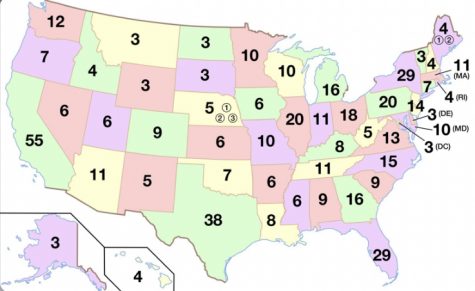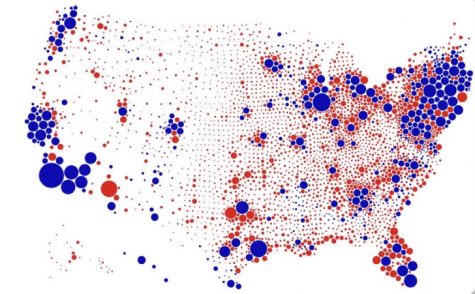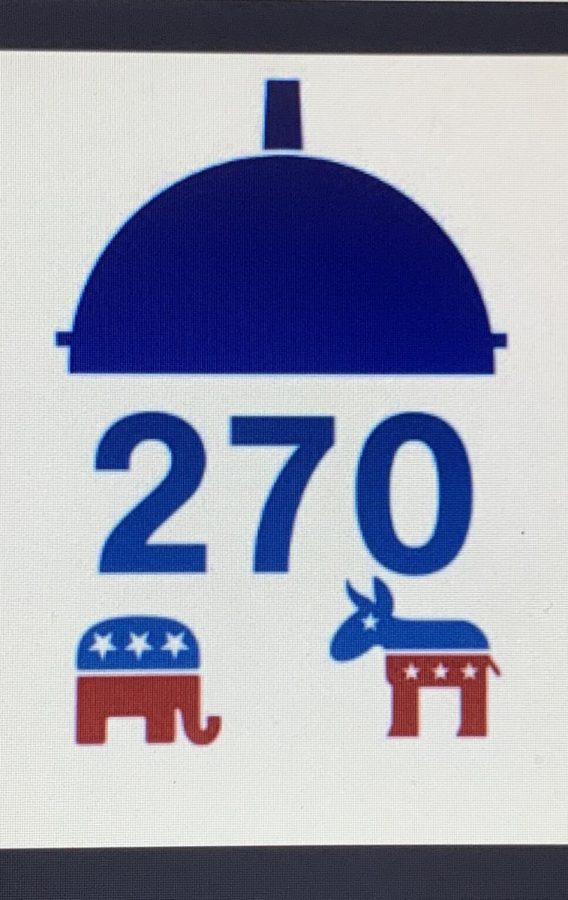The Electoral College Dilemma
November 20, 2020
The electoral college is the somewhat confusing system the United States uses to count votes in the election. There are 538 electors total, with different numbers for each state depending on population. A candidate has to get 270 electoral votes to win the election. Since the signing of the constitution, the presidential elections have never been solely based on the popular vote. The question a lot of people have is, why not?

The answer to this question has a lot to do with the history of the problem. To understand the reasoning behind the Electoral College, Matthew Nighswonger, a government teacher at Shadow, explained the thought process.
“It was a compromise at the Constitutional Convention between the big states and the small states, in terms of population size. Smaller states were worried that they would not have enough of an influence on the outcome of Presidential elections, so the Electoral College gives smaller states an outsized influence,” he explained.
Early Americans had a valid fear that the federal government would take advantage of their power and the smaller states would not have any say in the future of their country. For a very long time, the Electoral College has been regarded as the right move, and a pretty genius system, but times have changed since 1776. Is it still the right move?

Along with the drastic changes in education, the United State’s population and population density aren’t even comparable to the 1790’s. Mr. Nighswonger pointed out those changes as well.
“When the Constitution was written the biggest state (in terms of population) was about five times bigger than the smallest state. Now the biggest state is about 80 times bigger than the smallest state. The skew towards smaller states in the Electoral College keeps becoming more pronounced.”
That skew towards smaller states is the reason that many people today find the system outdated.
According to Mr. Janette, another Shadow Ridge government teacher, that’s where the root of the problem is.
“Most people don’t understand how the Electoral College disproportionately favors small states. They think because California has 55 electoral college votes and Wyoming has 3, California wields more political power. However, based on population, Wyoming gets 1 electoral college vote per every 134,000 citizens while California only gets 1 per every 410,000 citizens. So, really Wyoming wields 2.5 times the political power as California.”
Looking at it that way, it’s easy to see how some people are in favor of revising the system.









Susan Anthony • Nov 20, 2020 at 4:31 pm
The National Popular Vote bill is 73% of the way to guaranteeing the majority of Electoral College votes and the presidency to the candidate who receives the most popular votes in the country.
The bill changes state statewide winner-take-all laws (not mentioned in the U.S. Constitution, but later enacted by 48 states), without changing anything in the Constitution, using the built-in method that the Constitution provides for states to make changes.
It requires enacting states with 270 electoral votes to award their electoral votes to the winner of the most national popular votes.
All votes would be valued equally in presidential elections, no matter where voters live.